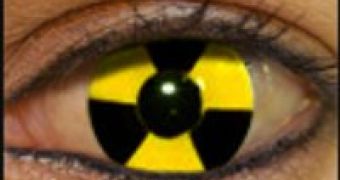Radioactive batteries, also known as atomic batteries, are electricity storage devices which use the charged particle emissions from a radioactive isotope to directly generate electricity. Recently, this old idea has been reinvented by, who else, DARPA (Defense Advanced Projects Research Agency), in search of new high-tech batteries for the US military.
The first project in the world to convert natural radioactive decay directly into electricity appeared in 1913 and batteries using this energy of radioisotope decay are thought to last for 10 years. The only problem is that these radioactive batteries usually have an efficiency of 0.1-5%.
This percentage in itself wouldn't be so disappointing if they weren't using radioactive materials like tritium, a radioactive isotope of hydrogen. For instance, a normal incandescent light bulb converts only 2% of the energy it consumes into light, the rest being lost as heat.
Such a battery, developed in 2005, was powered by the beta-particle-emitting decay of tritium and its makers claimed that, by being so small, it could be used as a continuous power source for portable electronic devices, like household appliances and pacemakers.
A recent type of atomic battery has attracted the attention of DARPA, the betavoltaic battery, which generates electrical current from a radioactive source emitting beta particles, the electrons. Remarkably similar to solar cells, betavoltaic batteries use electrons that strike a particular interface between two layers of material, to produce electricity.
Porous silicon diodes are the latest development of this technology, which promise a significant increase in efficiency, due to the larger surface area of the capture material. The latest techniques for carving silicon makes it possible to greatly increase the lifespan of these batteries, up to 20 years.
This will mean that future batteries could extend the life of spacecraft which require electrical power for up to two decades and could also be used in life-lasting pacemakers, due to the fact that they don't actually emit harmful radiation, they only convert it into electricity.

 14 DAY TRIAL //
14 DAY TRIAL //